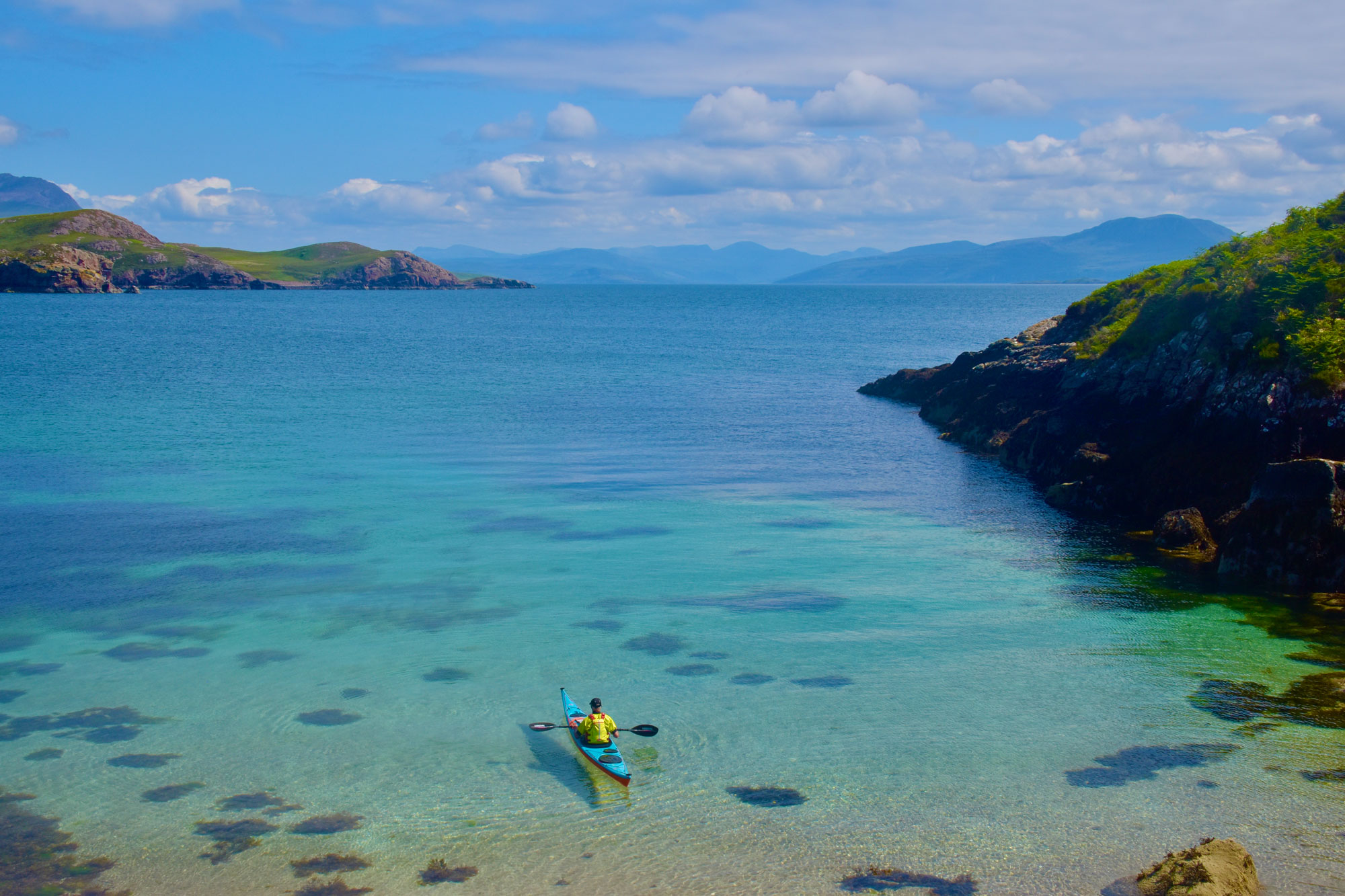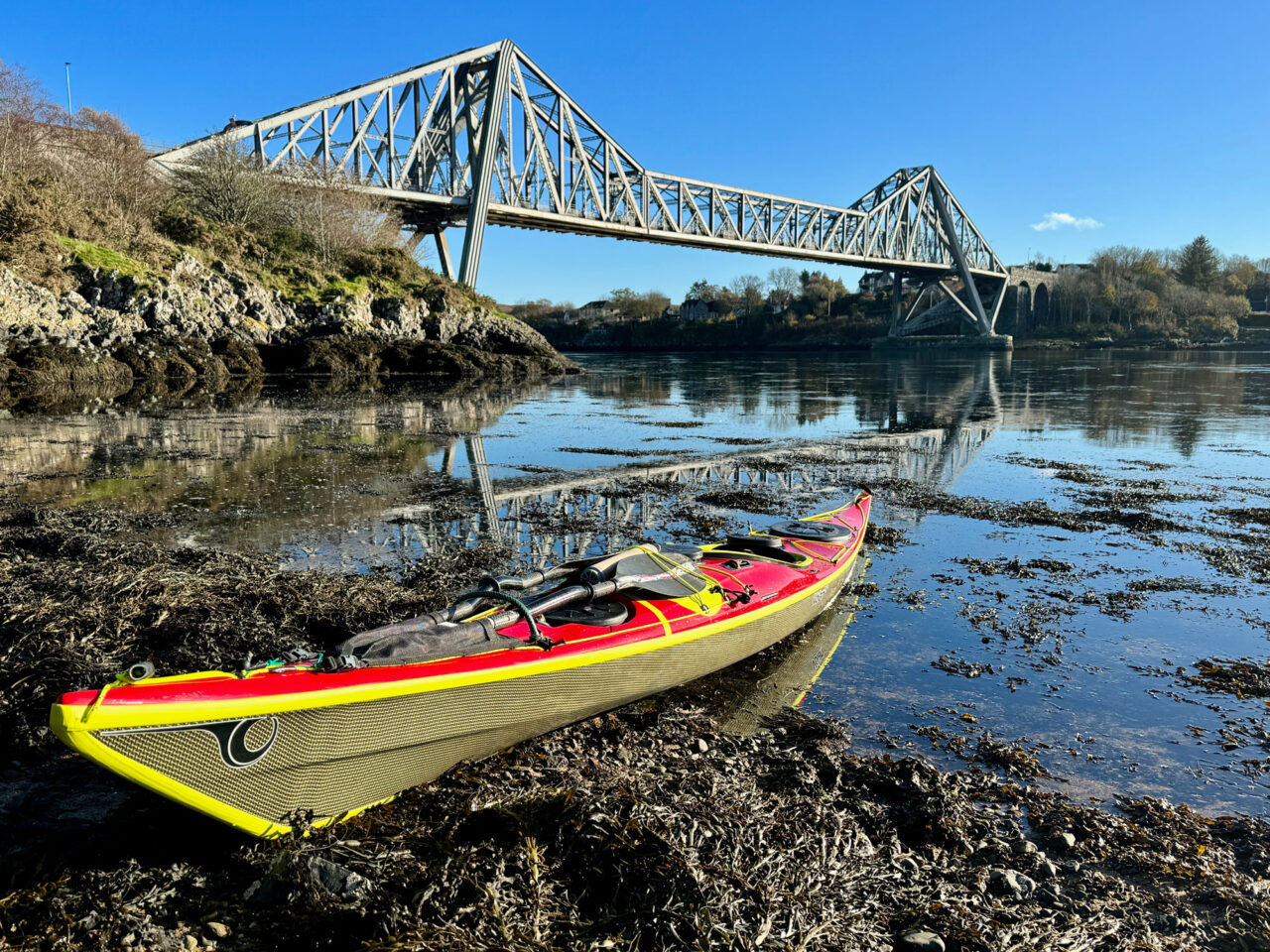Words by Doug Cooper
For over 30 years, I have been happy paddling Diolen construction sea kayaks, many of which I have chosen to get made up in a more robust ‘heavyweight’ layup for work and expeditions. This has all changed now, though, with my current mantra being ‘light is right’, and with the new P&H Ultralight construction option available to enjoy, there has never been a better time for this paradigm shift in my sea kayak construction choice!
What has led to this change of thinking, though, and could light be right for you as well? It has certainly revolutionised my sea kayaking experience, and as we’ll go on to explore, it will allow me to continue sea kayaking a lot longer into my ‘twilight’ years!
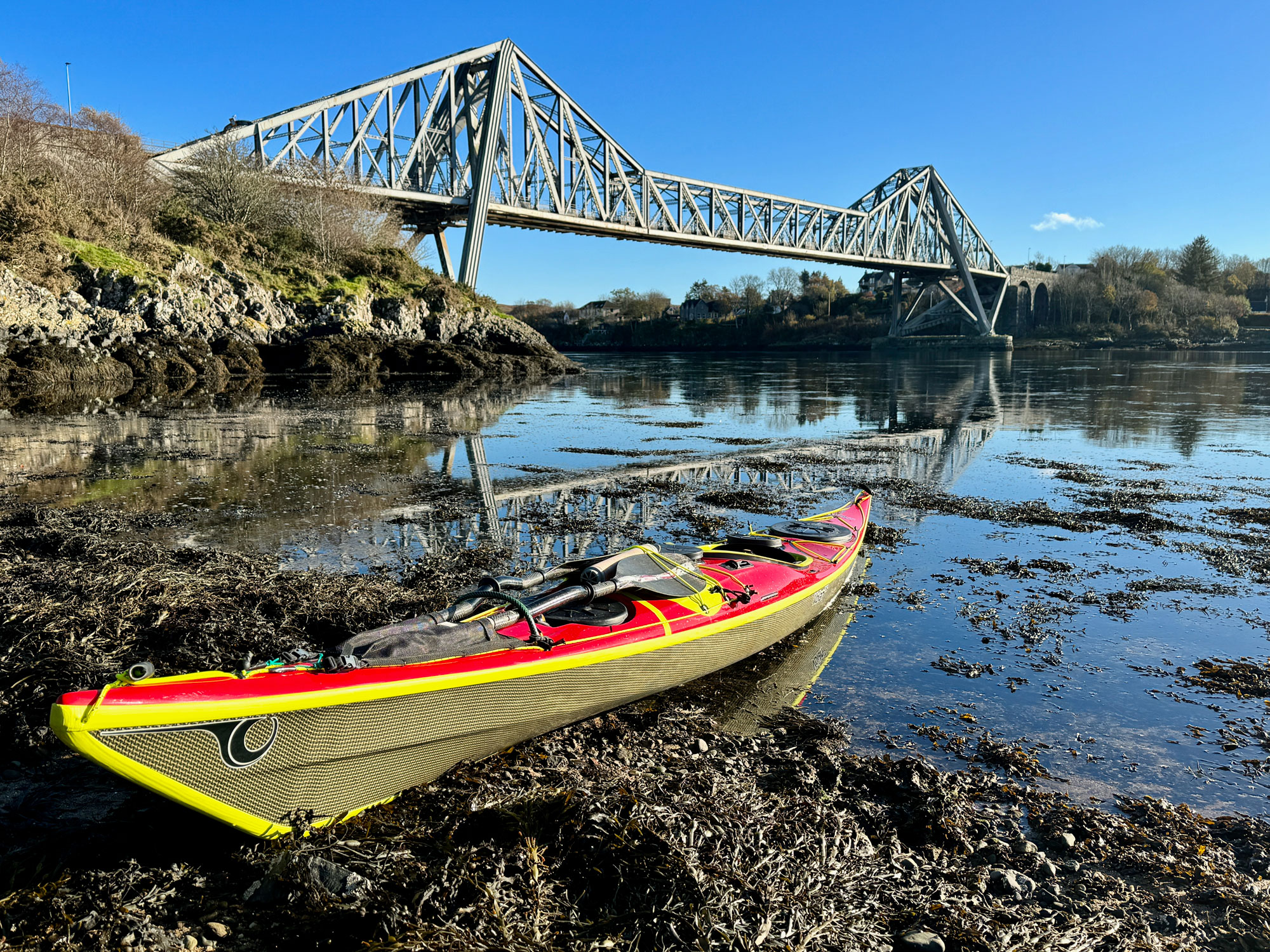
Sooner or later, a lifetime of ‘exploring my boundaries’ in the world of kayaking was always going to take its toll on my (now) ageing body. With the benefit of hindsight, it is only too easy to offer advice to my ‘younger self’ with regards to taking it easier, warming up more, caring for the body and allowing injuries proper time to recover; however, reality proved to be different!
An ongoing back issue led to 4 months of relative immobility last year, with a constant question of whether I would paddle again always present in my mind during this period. As things slowly got better, the physios prescribed gradually getting back out paddling – this was music to my ears!
During this period, it quickly became overtly obvious that the paddling was the easy thing; that was actually feeling good for my back. However, the moving, loading, unloading and lifting of my trusty sea kayak was the biggest challenge and thing that was stopping me from getting out – it was just too difficult for my recovering back.
I have used sea kayak trolleys for many years now, along with easy load roof rack systems, but even with all that – the kayak still needs to be lifted, and that was a problem for me. I couldn’t help but think – has all this lifting and carrying been the root cause of my back problems as opposed to the actual paddling? Also, for all those people out there who are similarly challenged lifting and carrying their sea kayak (for many other reasons as opposed to purely injury), is this perhaps the biggest barrier to enjoying getting out sea kayaking?

A shout out to my long-term friends at P&H, and a lightweight construction sea kayak was on its way – with the hope of solving all my problems and getting me back out on the water doing what I love to do!
I was still a bit sceptical about how much difference a lightweight boat would make, but I can now say the difference between carrying a 15kg Ultralight kayak and my previous 26kg kayak is nothing other than remarkable. Whether it was me loading/carrying my kayak with a friend or with the trolley or doing it on my own, it made it easy.
This ease of carrying suddenly encouraged and enabled me to get out more; popping down to the water for an hour’s paddle suddenly became easy to do as opposed to ‘more hassle than it was worth’. My bad back still needed looking after, but the paddling was pretty good for it, and now getting to the water was possible; this new lightweight ‘wonder’ boat not only enabled me to get out, but I am convinced will allow me to keep getting out into the future.

As my back recovered and my paddling increased, I soon discovered other advantages of my new ‘light is right’ toy. On expedition, I had previously thought there was little point in a lightweight boat as you just fill it with heavy kit anyway – how wrong was I! I can now carry my empty (or nearly empty) light boat to the water or up to land and then carry my expedition kit to and from it in a not-too-heavy kit bag. A little more walking, yes, but a lot easier on the body – which I now know is important!
I still always use a trolley with my sea kayak when possible, but again, pulling a lightweight boat is so much easier, and there is always some twist in the body when doing this, so my back is thankful!
As my body continued to recover, I could start getting back out in the more advanced environments, enjoying sessions on the Falls of Lora, surfing at the beach, a downwind run or tidal race play. In all of these environments, the lightness of the boat and the stiffness of the hull did nothing other than put a smile on my face. It was more responsive, felt easier to manoeuvre and seemed to want to just ‘dance with the waves.’ Suddenly, my new kayak, which was initially acquired to enable me to get out paddling, was now enabling me to perform better as well – something I didn’t think would be happening at my stage of paddling!
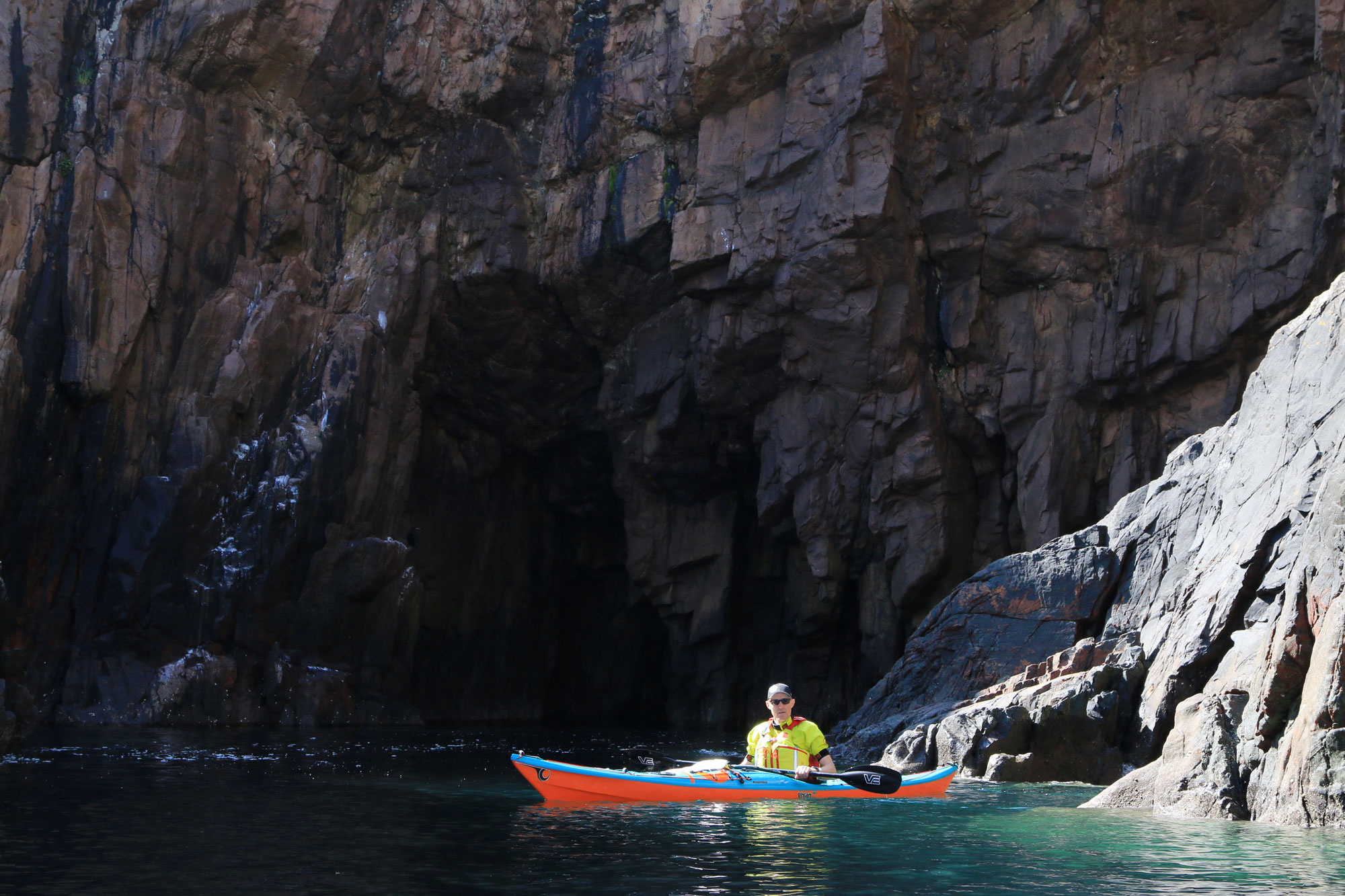
Having been enjoying my move to a lightweight construction for over 6 months, a final previous concern of ‘going lightweight’ is also starting to be dispelled. That being the kayak will be ‘fragile’ and have the potential of breaking!
I’m always careful with my kayaks, but that said, they do get a lot of use in often advanced conditions with awkward landings; this is both empty and fully laden. Despite its weight, I’ve now got complete confidence that my kayak is far from ‘fragile’; the lightweight construction is certainly tough enough for all I am going to be using it for. It will indeed be serving me well for many years to come, as I now believe my body might be as well.
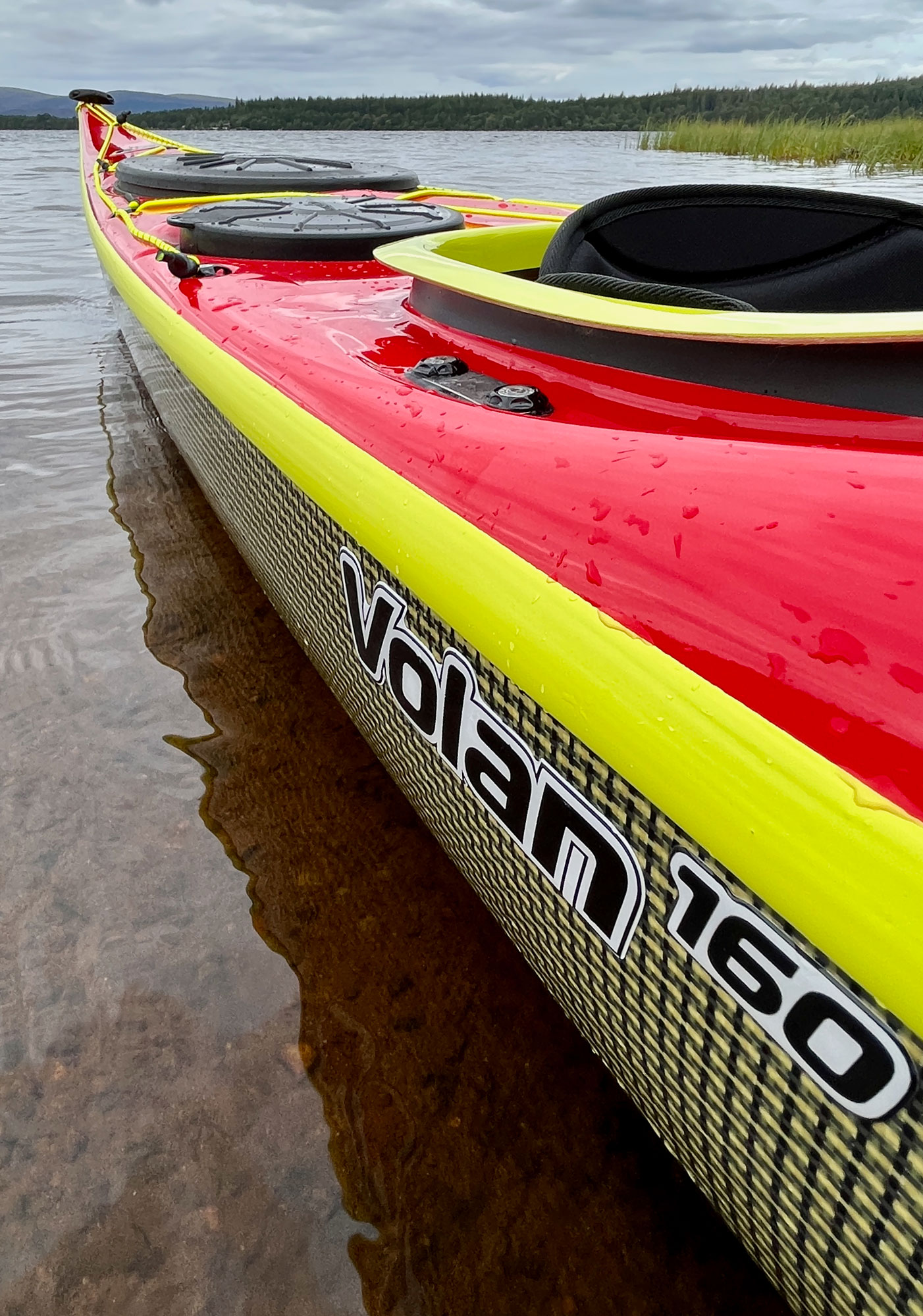
So, if any of the above resonates with your own experiences of sea kayaking and you are in the position to consider investing a fair amount of money, then I can assure you the benefits can be life-changing. You may well end up joining me in my mantra that ‘light is right’!
